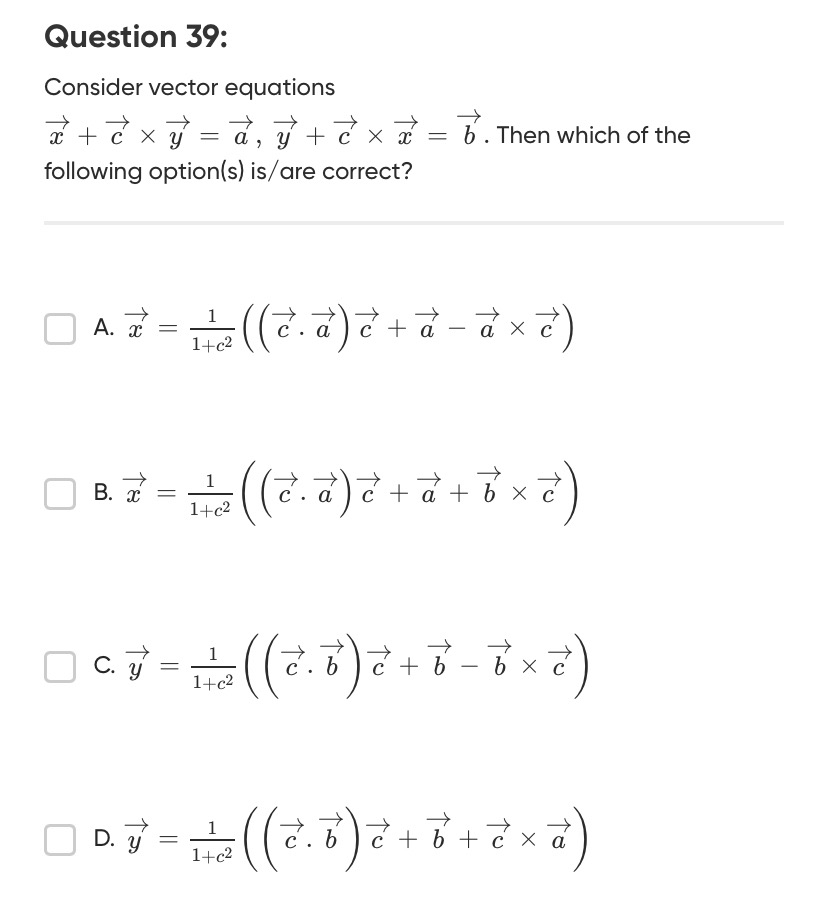Question
Question: Consider vector equations $\vec{x} + \vec{c} \times \vec{y} = \vec{a}, \vec{y} + \vec{c} \times \vec...
Consider vector equations x+c×y=a,y+c×x=b. Then which of the following option(s) is/are correct?

x=1+c21((c⋅a)c+a−a×c)
x=1+c21((c⋅a)c+a+b×c)
y=1+c21((c⋅b)c+b−b×c)
y=1+c21((c⋅b)c+b+c×a)
B, D
Solution
We are given the vector equations:
- x+c×y=a
- y+c×x=b
From equation (2), we can express y as: y=b−c×x
Substitute this expression for y into equation (1): x+c×(b−c×x)=a x+c×b−c×(c×x)=a
Using the vector triple product identity u×(v×w)=(u⋅w)v−(u⋅v)w, we have c×(c×x)=(c⋅x)c−(c⋅c)x. Let c2=c⋅c. So, c×(c×x)=(c⋅x)c−c2x.
Substituting this back into the equation: x+c×b−[(c⋅x)c−c2x]=a x+c×b−(c⋅x)c+c2x=a Rearranging terms to solve for x: (1+c2)x−(c⋅x)c=a−c×b
To solve for x, we can project this equation onto c and onto the plane perpendicular to c. Let x=kc+x⊥, where x⊥⋅c=0. The component parallel to c is: (1+c2)kc−(kc⋅c)c=(a−c×b)⋅cc (1+c2)kc−kc2c=ca⋅c−(c×b)⋅c kc=ca⋅ccc=c2a⋅cc. So, k=c2a⋅c.
The component perpendicular to c is: (1+c2)x⊥=a−c×b−kc x⊥=1+c21(a−c×b−c2a⋅cc)
Then x=kc+x⊥=c2a⋅cc+1+c21(a−c×b−c2a⋅cc) x=c2a⋅cc(1−1+c21)+1+c21(a−c×b) x=c2a⋅cc(1+c2c2)+1+c21(a−c×b) x=1+c2(c⋅a)c+1+c2a−c×b=1+c21((c⋅a)c+a−c×b)
Comparing this with the options: Option B is x=1+c21((c⋅a)c+a+b×c). Since b×c=−c×b, Option B is correct.
By symmetry, we can find the expression for y by swapping a and b in the expression for x: y=1+c21((c⋅b)c+b−c×a)
Comparing this with the options: Option D is y=1+c21((c⋅b)c+b+c×a). Since c×a=−a×c, Option D is correct.
The correct options are B and D.
